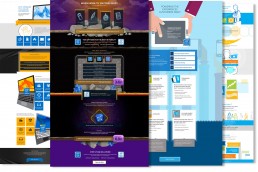Intel is the world’s largest processor producer, and any project Intel engages in needs a caliber of work that matches its scale. Intel Retail Edge Program (IREP) is a program that couples a continually maintained and fully customized Learning Management System with a robust rewards program. It has a membership of over 100,000 and is available to Retail Service Providers and their management teams worldwide. The program provides incredibly engaging content and a gamified perks system that is tailored to nearly every major geographic region around the globe.

During my over 5 years as a Senior Interactive Designer on this project, I had a chance to solve a multitude of challenges on a regular basis. These challenges ranged from simple single interaction elements to system-wide evaluations and implementation. I approached every feature, interaction, and content delivery method as a user advocate.

In addition to contributing design elements to the portal itself, I actively created the learning content as well. We originally built all the modules in Flash, but eventually moved all content to standards-based development.
Some of the largest challenges are to interpret and implement client visions while maintaining focus on user experience. Part of the job was conceptualizing and wireframing viable scenarios to help convey how user needs may be affected given the restraints or goals provided. Merging stakeholder requirements and program participant expectations was paramount to success.
Infographics were a considerable portion of the program’s content. I enjoyed creating these, because it allowed me to really focus on presenting information in concise yet entertaining ways.

As the program grew, our methods of collecting and analyzing user data evolved considerably. Luckily, there was a built in Forum that allowed for direct conversation and polling of the users themselves. Participation in higher level testing, such as A/B and Information Architecture mapping, was provided as a reward to more active members in some cases. This kind of data proved invaluable when creating personas or determining what features would be worth the resources to create and/or maintain.

